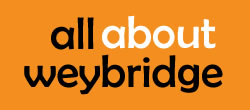War Propaganda and Posters: Shaping Public Opinion in Conflict
During conflict, governments and military authorities have often utilised the power of propaganda and posters to shape opinions and gain support for their cause. Through design and persuasive messaging, war propaganda posters have proven to be tools for influencing public sentiment, recruiting soldiers, and mobilising entire nations. Since World War I, these posters have played a role in psychological warfare, impacting society.
A Historical Outlook: World War I
World War I stands out as an era for producing war propaganda posters. As nations engaged in conflict, they heavily relied on these poster photo prints to foster patriotism, rally support, and justify their involvement in the war. This type of poster printing employed imagery, vibrant colour schemes and concise slogans to convey their messages effectively.
One notable example from this period is the recruitment poster “I Want You for U.S. Army” featuring Uncle Sam. Created by James Montgomery Flagg in 1917, it encouraged American men to enlist by appealing to their sense of duty and love for their country.
The poster effectively established a connection with men on a level by utilising bold typography, striking imagery and the authoritative presence of Uncle Sam.
Propaganda Posters in World War II
Propaganda underwent development during World War II. Governments refined their techniques based on the successes of propaganda posters in World War I. In Nazi Germany, Adolf Hitler’s regime employed propaganda posters to promote their ideology and secure unwavering support from the German population.
One such propaganda poster, created by Hans Schweitzer, depicted an Aryan family alongside the slogan, “Mother, your genes fight for them!” The intention was to appeal to the instincts of women and emphasise the importance of protecting the purity of the Aryan race. Through messaging, this poster aimed to shape opinion and garner support for Hitler’s eugenicist policies.
Women and WW II
Women played a role during World War II as they broke gender roles both at home and on the front lines. Government propaganda posters actively encouraged women to contribute to the war effort by joining the workforce and supporting war machinery.
“Rosie the Riveter” emerged as a symbol of empowerment during this period. The “We Can Do It” poster, created by J. Howard Miller, in 1942, showcases a woman flexing her arm. It encouraged women to assume roles in factories and industries, challenged societal norms, and contributed to the feminist movement.
Propaganda Posters Today
In this era, despite the changing landscape of war propaganda, due to media and the internet, posters still play a significant role in shaping public opinion and influencing popular sentiment. During the Gulf War in the 1990s, governments and military authorities utilised—billboards to convey their narratives and garner support for military actions.
One notable example is the “Kuwait Is Bleeding” poster produced by the U.S. Department of Defense in 1991. This poster depicted an oil-soaked bird as a symbol of the devastation caused by Saddam Hussein’s invasion of Kuwait. By highlighting the impact of the conflict, this poster aimed to rally support and justify military intervention in that region.
In times of war, propaganda posters have extended their influence to media platforms like Facebook and Twitter. Governments and organisations leverage content on these platforms to disseminate their narratives effectively and sway opinion.
These digital posters often use captivating visuals, concise slogans and crafted designs to captivate audiences and mould their perceptions of conflicts.
The Enduring Impact
War propaganda posters can leave a lasting impact on societies. Long after the wars have ceased, these impactful images and messages persistently shape memory and collective consciousness. They serve as artefacts reminding generations of the emotions, sacrifices and stories of past conflicts.
Whether it’s the recruitment posters of World War I, the propaganda of World War II, or the day digital campaigns, war propaganda posters have played a role in influencing public opinion. By leveraging emotions, visual cues and strategic messaging, these posters have proven to be tools for garnering support, justifying conflicts and influencing popular sentiment. As long as conflicts endure, war propaganda posters will continue to shape the narratives of our society.
